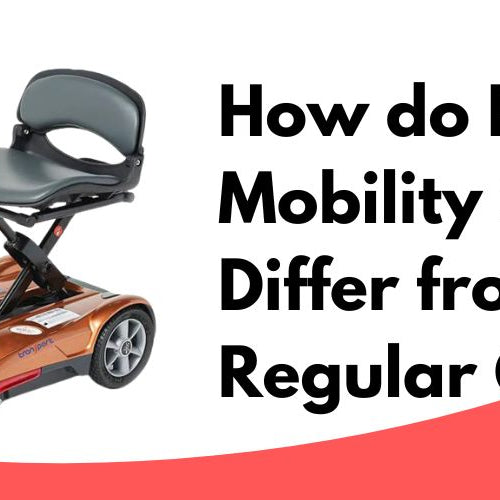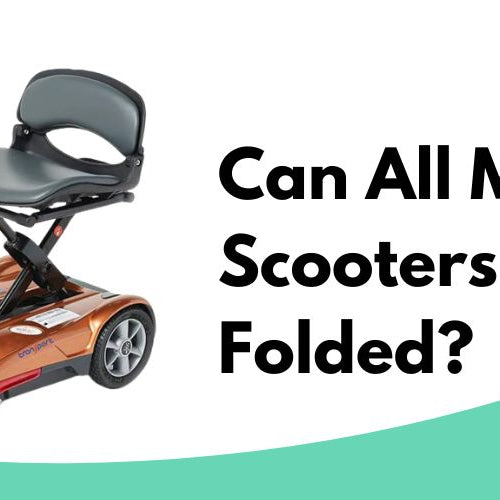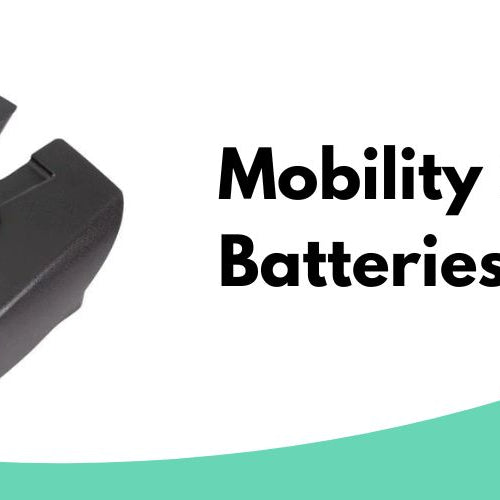Mobility scooters have become increasingly popular among people with disabilities, the elderly, and those with limited mobility. They offer a convenient and efficient way to navigate through public spaces and perform daily tasks. However, there has been growing concern about the safety of mobility scooters and their potential to cause accidents.
There are several factors that contribute to the potential danger of mobility scooters. For one, they can travel at relatively high speeds and are often driven in crowded areas. Additionally, many users may not be familiar with the rules of the road or may have limited mobility, making it difficult to react quickly to unexpected situations. Finally, the design of some mobility scooters may make them prone to tipping over or losing balance.
Despite these concerns, it is important to note that mobility scooters can be a safe and effective mobility aid when used properly. There are many resources available to help users learn how to operate their scooters safely and navigate through public spaces. Additionally, many cities and municipalities are taking steps to improve infrastructure and make public spaces more accessible and safe for mobility scooter users.
Mobility Scooters: An Overview
Mobility scooters are a type of electric vehicle designed to help people with mobility issues move around more easily. They are a popular choice for elderly people or those with disabilities who struggle to walk long distances. Mobility scooters are also commonly used in shopping centers, airports, and other public spaces.
Mobility scooters come in many different shapes and sizes, ranging from small and compact models to larger, more robust vehicles. They are typically powered by rechargeable batteries and can travel at speeds of up to 8mph, although some models are restricted to a maximum speed of 4mph.
One of the biggest benefits of mobility scooters is that they can help people with mobility issues to maintain their independence. They can be used to complete everyday tasks such as shopping, visiting friends, and attending medical appointments. Mobility scooters are also relatively easy to operate, with simple controls and a comfortable seating position.
However, there are also some potential dangers associated with mobility scooters. For example, they can be difficult to maneuver in tight spaces, and users may struggle to see pedestrians or other obstacles. They can also be unstable on uneven terrain or when traveling at high speeds.
To ensure the safe use of mobility scooters, it is important to follow some basic guidelines. These may include:
- Always wear a helmet and other protective gear when using a mobility scooter.
- Never exceed the maximum weight limit of the scooter.
- Always follow the manufacturer's instructions for operating the scooter.
- Be aware of your surroundings and watch out for pedestrians and other obstacles.
- Avoid steep inclines and uneven terrain where possible.
- Always use the scooter on designated pathways or roads.
Overall, mobility scooters can be a useful tool for people with mobility issues. However, it is important to use them safely and responsibly to avoid any potential dangers or accidents.
Are Mobility Scooters Dangerous?
Mobility scooters offer a convenient and affordable way for people with mobility issues to get around. However, there has been some concern about the safety of these devices. In this article, we will explore the question of whether mobility scooters are dangerous and provide the reader with all the information they might want to know about this topic.
Factors Contributing to Mobility Scooter Accidents
While mobility scooters are generally safe, accidents can happen. Here are some factors that can contribute to mobility scooter accidents:
-
Operator error: Many mobility scooter accidents are caused by operator error. For example, the operator may not be paying attention to their surroundings, may be driving too fast, or may not have received proper training on how to operate the device.
-
Environmental factors: Environmental factors such as uneven terrain, poor lighting, and bad weather can increase the risk of mobility scooter accidents.
-
Mechanical failure: Mechanical failure can also contribute to mobility scooter accidents. For example, if the brakes fail or the steering mechanism malfunctions, the operator may lose control of the device.
-
Other factors: Other factors such as the operator's age, physical condition, and medication use can also contribute to mobility scooter accidents.
To reduce the risk of mobility scooter accidents, it is important to address these factors. Operators should receive proper training on how to operate the device, and should always pay attention to their surroundings. Environmental factors should also be taken into consideration, and operators should avoid driving in bad weather or on uneven terrain. Regular maintenance and inspections can help prevent mechanical failure, and operators should always check their device before use.
7 Factors to Consider When Choosing a Mobility Scooter
If you are considering purchasing a mobility scooter, here are 7 factors to consider:
-
Weight capacity: Make sure the mobility scooter can support your weight.
-
Battery life: Consider the battery life of the device and whether it will meet your needs.
-
Speed: Consider the maximum speed of the device and whether it is appropriate for your needs.
-
Turning radius: Consider the turning radius of the device and whether it will be able to navigate tight spaces.
-
Comfort: Consider the comfort of the device and whether it will be comfortable for long periods of use.
-
Storage: Consider the storage options for the device and whether it will fit in your home or vehicle.
-
Price: Consider the price of the device and whether it fits within your budget.
By considering these factors, you can choose a mobility scooter that is safe and appropriate for your needs.
Conclusion
Mobility scooters can provide a convenient and safe way for people with mobility issues to get around. However, it is important to be aware of the factors that can contribute to mobility scooter accidents and to choose a device that is safe and appropriate for your needs. By doing so, you can enjoy the freedom and independence that a mobility scooter can provide.
7 Common Mobility Scooter Accidents
-
Collisions with other vehicles or pedestrians: Mobility scooters can be difficult to see, especially if the rider is not paying attention or if the scooter is traveling at a high speed. Collisions with other vehicles or pedestrians can result in serious injuries or even death.
-
Falls: Mobility scooters can tip over if they are driven on uneven surfaces or if the rider takes a turn too quickly. Falls can result in broken bones, head injuries, or other serious injuries.
-
Mechanical failures: Like any vehicle, mobility scooters can experience mechanical failures. If the brakes fail or the steering mechanism malfunctions, the rider can lose control of the scooter and be involved in an accident.
-
Overheating: If a mobility scooter is used for an extended period of time, it can overheat. This can cause the battery to fail or the motor to malfunction, which can result in an accident.
-
Weather-related accidents: Mobility scooters are not designed to be used in inclement weather, such as rain or snow. If a rider attempts to use a mobility scooter in bad weather, they can be involved in an accident.
-
Driving under the influence: Just like driving a car, driving a mobility scooter under the influence of drugs or alcohol is dangerous and can lead to accidents.
-
Lack of maintenance: Mobility scooters require regular maintenance to ensure that they are in good working order. If a scooter is not properly maintained, it can malfunction and cause an accident.
By being aware of these common mobility scooter accidents, riders can take steps to avoid them and reduce the risk of injury. It is important for riders to be responsible and take safety seriously when using a mobility scooter.
Preventing Mobility Scooter Accidents
Mobility scooter accidents can occur due to a variety of reasons, including driver error, mechanical failure, and environmental hazards. Here are some tips to help prevent mobility scooter accidents:
-
Proper Training: It is essential to receive proper training before operating a mobility scooter. Many organizations offer training programs that cover the basics of operating a mobility scooter and teach safe driving practices.
-
Regular Maintenance: Regular maintenance is crucial to ensure that the mobility scooter is in good working condition. This includes checking the brakes, tires, and battery regularly.
-
Environmental Awareness: Mobility scooter drivers should be aware of their surroundings and any potential hazards. This includes uneven surfaces, curbs, and obstacles that could cause the scooter to tip over.
-
Respect Traffic Laws: Mobility scooters should be driven on the sidewalk or designated pedestrian areas. Drivers should follow traffic laws, including stopping at crosswalks and yielding to pedestrians.
-
Use Safety Equipment: It is essential to use safety equipment such as helmets and reflective clothing when driving a mobility scooter. This can help increase visibility and reduce the risk of accidents.
By following these tips, mobility scooter drivers can help prevent accidents and ensure their safety and the safety of others.
Ways to Stay Safe on a Mobility Scooter
-
Get Proper Training: Before operating a mobility scooter, it is essential to receive proper training. Many organizations offer training programs that cover the basics of operating a mobility scooter and teach safe driving practices.
-
Regular Maintenance: Regular maintenance is crucial to ensure that the mobility scooter is in good working condition. This includes checking the brakes, tires, and battery regularly.
-
Environmental Awareness: Mobility scooter drivers should be aware of their surroundings and any potential hazards. This includes uneven surfaces, curbs, and obstacles that could cause the scooter to tip over.
-
Respect Traffic Laws: Mobility scooters should be driven on the sidewalk or designated pedestrian areas. Drivers should follow traffic laws, including stopping at crosswalks and yielding to pedestrians.
-
Use Safety Equipment: It is essential to use safety equipment such as helmets and reflective clothing when driving a mobility scooter. This can help increase visibility and reduce the risk of accidents.
-
Avoid Overloading: Mobility scooters have a weight limit, and it is essential to avoid overloading the scooter. Overloading can cause the scooter to tip over, leading to accidents.
-
Be Alert: Mobility scooter drivers should be alert and focused while driving. This includes avoiding distractions such as using a phone or listening to music while driving.
By following these tips, mobility scooter drivers can help ensure their safety and the safety of others.
Conclusion
Mobility scooters are a popular mode of transportation for seniors and people with disabilities. While they offer many benefits, including increased independence and improved mobility, there are also concerns about their safety. In this article, we have explored the risks and benefits of mobility scooters and provided information that readers might want to know about this topic.
One of the main concerns about mobility scooters is their potential to cause accidents. According to a study by the National Highway Traffic Safety Administration, there were over 100,000 accidents involving mobility scooters and power wheelchairs between 2006 and 2012. These accidents resulted in over 27,000 injuries and nearly 700 deaths. However, it is important to note that many of these accidents were caused by operator error or other factors that could have been prevented.
To reduce the risk of accidents, it is important to follow the rules for using mobility scooters. These rules include staying on sidewalks and pedestrian paths whenever possible, avoiding busy roads and intersections, and using caution when crossing streets. It is also important to maintain the scooter properly, including keeping it charged and checking the brakes and tires regularly.
Despite the risks, mobility scooters offer many benefits to seniors and people with disabilities. They can provide increased independence and mobility, allowing people to participate in activities and events that they might not otherwise be able to. They can also improve mental health and well-being by reducing isolation and increasing social interaction.
In conclusion, mobility scooters can be a safe and effective mode of transportation for seniors and people with disabilities. However, it is important to follow the rules for using them and to take proper precautions to reduce the risk of accidents. By doing so, users can enjoy the many benefits that mobility scooters offer.
Frequently Asked Questions
What are the safety features of mobility scooters?
Mobility scooters come with various safety features to ensure the safety of the user. Some of these features include:
- Speed control: Mobility scooters come with speed control settings to limit the maximum speed of the scooter.
- Anti-tip wheels: These wheels help to prevent the scooter from tipping over.
- Automatic brakes: Mobility scooters have automatic brakes that engage when the user releases the throttle.
- Lights and reflectors: Mobility scooters come with lights and reflectors to increase visibility, especially in low-light conditions.
What are the risks associated with using mobility scooters?
Like any other vehicle, mobility scooters come with risks. Some of these risks include:
- Accidents: Mobility scooters can be involved in accidents, either due to user error or external factors such as poor road conditions.
- Tipping over: Mobility scooters can tip over, especially if the user is traveling on uneven terrain or going too fast.
- Collisions: Users can collide with other objects or people, leading to injuries.
How can users minimize the risk of accidents while using mobility scooters?
Users can minimize the risk of accidents while using mobility scooters by:
- Following traffic rules and regulations.
- Staying within the recommended speed limits.
- Avoiding distractions such as using a phone while operating the scooter.
- Wearing protective gear such as helmets and reflective clothing.
- Maintaining the mobility scooter regularly to ensure it is in good condition.
What are the statistics on mobility scooter accidents?
According to a study by the National Highway Traffic Safety Administration, there were 14,000 mobility scooter-related injuries in 2017. However, it is worth noting that not all of these injuries were due to accidents, and some were due to other factors such as medical conditions.
What are the legal requirements for using mobility scooters?
The legal requirements for using mobility scooters vary depending on the state or country. In the United States, mobility scooters are classified as "power-driven mobility devices" and are subject to certain rules and regulations. For example, users must follow traffic rules and regulations, and they must be at least 16 years old to operate a mobility scooter.
What should users consider before purchasing a mobility scooter?
Before purchasing a mobility scooter, users should consider:
- The intended use of the scooter.
- The terrain the scooter will be used on.
- The weight capacity of the scooter.
- The range of the scooter.
- The user's physical abilities and limitations.
Overall, mobility scooters can be a safe and convenient mode of transportation for individuals with mobility impairments. However, users must be aware of the risks and take appropriate measures to ensure their safety while using the scooter.
We are here to help you with any questions at Mobility Nest.






Leave a comment